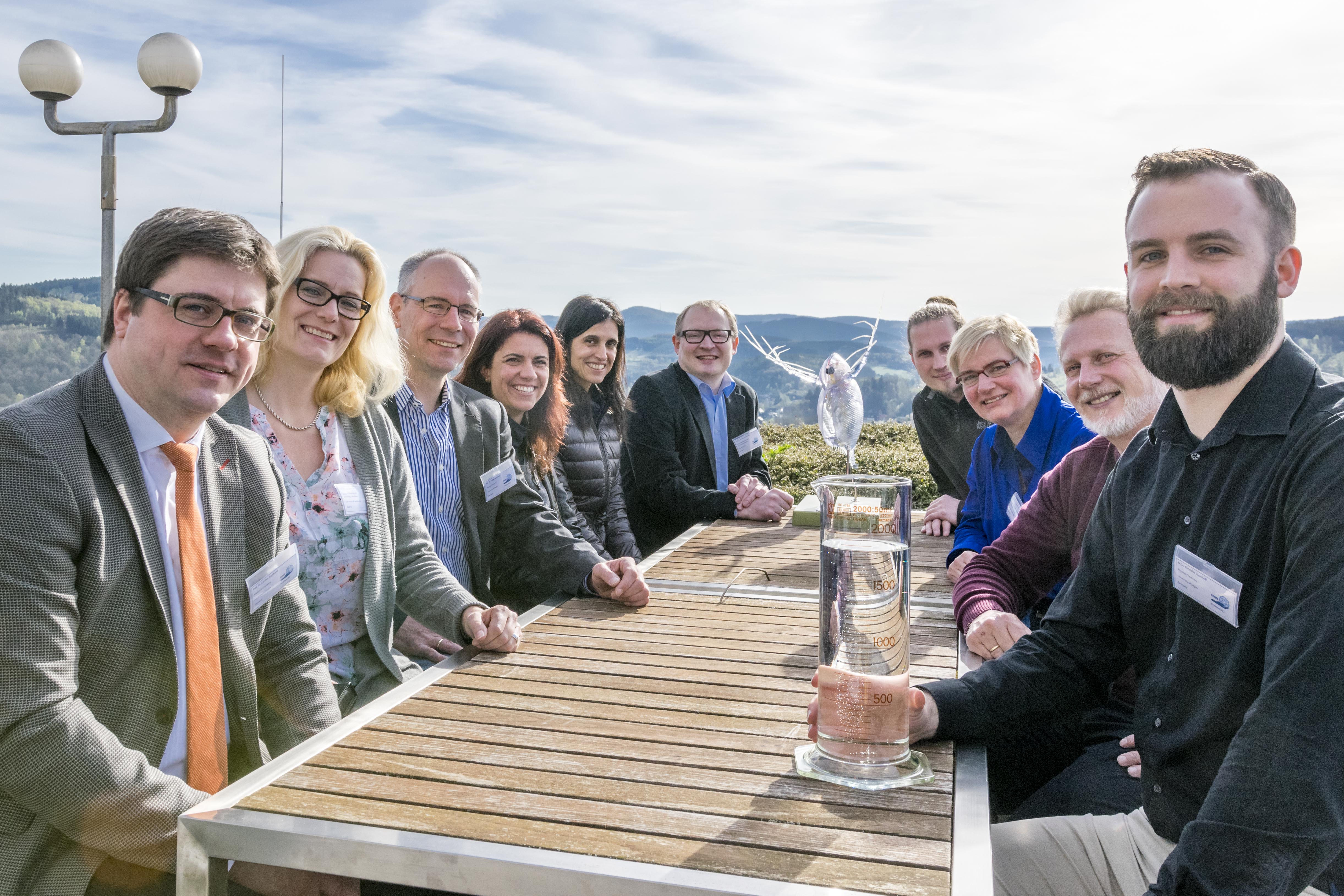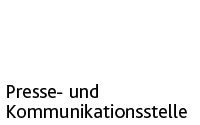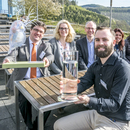Following the fate of smallest particles
Researchers of the University of Siegen investigate in the project “FENOMENO” the impact of nanomaterials on the environment.
In sunscreen and functional sportswear one finds more than the human eye still can see: Small particles, so-called nanoparticles. These nanoparticles are tiny (smaller than 100 nm [Nanoparticles are particles with a diameter smaller than 100 nm; 1 nanometer is one billionth of a meter; a typical human hair is thousand times thicker than a nanoparticle with 100 nm diameter.]) and may be found in many products that are commonplace and used sometimes even on a daily basis. During normal use, e.g. during washing, these nanoparticles find their way into household waste water and hence via waste water treatment plants into the environment. But what has happened to the nanoparticles on their passage? Are the particles altered by the waste water treatment and what does this mean for our environment and our health? Researchers of the University of Siegen tackle these and related questions in the framework of the project “FENOMENO” (Fate and effect of wastewater-borne manufactured nanomaterials in aquatic ecosystems).
FENOMENO is a European project located in the SIINN ERA-NET program (http://www.siinn.eu) and will be jointly executed with Prof. Dr. Christian Schlechtriem of the Fraunhofer Institute IME (Schmallenberg, Germany), the Research Institute for Limnology of the University of Innsbruck at the lake Mondsee (Austria) and the University of Aveiro (Portugal). National funding comes from the Federal Ministry of Education and Research (Bundesministerium für Bildung und Forschung, BMBF). The 36 month project started on April 1st 2015 and receives in total more than 1.1 million Euros funding. From the School of Science and Technology of the University of Siegen (Faculty IV) specialists from the fields of chemistry, biology, informatics and ethics participate in FENOMENO. The interaction between these different Departments within the School of Science and Technology renders the highly multidisciplinary research project feasible.
“Some nanomaterials may be, similar to all materials, potentially harmful. However, instead of issuing an indiscriminative warning, we want to elucidate this carefully. The aim of the project is to develop methods that enable us to decide on a rational, facts-based and rigorously scientifically-founded basis which of those materials are safe to use.” says Prof. Dr. Holger Schönherr, the project coordinator. Two approaches are being followed: In lake Mondsee in Austria the passage of silver and titanium dioxide particles will be followed in a natural food web (algae, water fleas, young fish and predator fish). In parallel the individual elements of a model food web will be analyzed in the laboratory.
Prof. Schönherr, who heads the research group “Physical Chemistry I“ at the Uni Siegen: ”Our project will elucidate the fate and effect of nanoparticles on the aquatic food web and a final risk assessment, in order to be able to evaluate and judge the risks of the use of nanoparticles for the environment and humans.“
In a first step silver and titanium dioxide nanoparticles that have passed through a waste water treatment plant will be used. With highly sensitive element mass spectrometry and high resolution microscopy any changes of the nanoparticles will be analyzed. The next steps follow in the lab, where an aquatic food web will be investigated step by step starting with algae.
Then daphnia (water fleas) come into play, which are considered to be key organisms of the aquatic food web. They feed on algae and are themselves food for young fish. In various test runs it will be elucidated how nanoparticles change the behavior of daphnia, their movements, heart beat rate, or reproduction rate, among others. In addition, their movement will be analyzed automatically to see in how far they can be used as biosensors in water. The related microscopy techniques and behavioral studies will lead to conclusions on uptake nanoparticles by organisms and their overall fate.
The University of Aveiro focusses on the biological effects of nanoparticles in algae, daphnia and fish on the molecular and biochemical level, while the partners of the Research Institute for Limnology at lake Mondsee will take samples of all organisms of the food web in the lake, which will be (bio)chemically and microscopically investigated in close collaboration with all other partners.
The project partners and research groups:
University of Siegen
http://www.chemie-biologie.uni-siegen.de/pc/hs/index.html
http://www.chemie-biologie.uni-siegen.de/analytische_chemie/engelhard/
http://www.chemie-biologie.uni-siegen.de/biologie/fachgruppen/oekologie/mitarbeiter/index_alt.html
http://www.eti.uni-siegen.de/ezls/index.html
http://www.uni-siegen.de/fokos/organisation/personen_beschreibung/gethmann/
Fraunhofer Institute for Molecular Biology and Applied Ecology IME
http://www.ime.fraunhofer.de/de/geschaeftsfelderAE/Chemikaliensicherheit/Bioakkumulation.html
University of Innsbruck (UIBK)
http://www.uibk.ac.at/limno/
University of Aveiro (UAVR)
http://www.cesam.ua.pt/index.php



